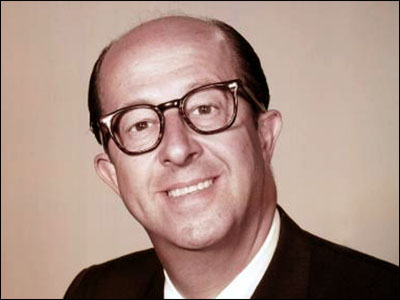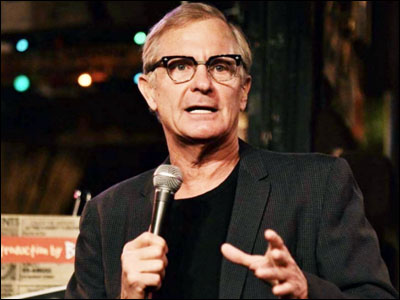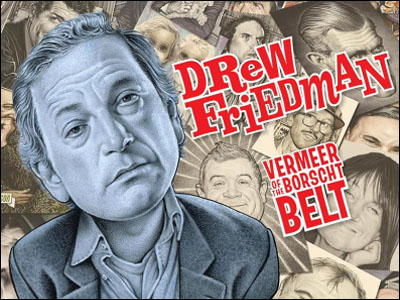
I mentioned here the other day that I would love to see — or at least read the script of — an unsold pilot from 1971 (give or take a year) called either Bel Air Patrol or Eddie. It was written by Larry Gelbart and starred Phil Silvers and several other familiar actors including Fred Clark. Several folks wrote to tell me that it couldn't have been done in 1971, even giving or taking a year, because Fred Clark died in 1968.
One of the things I love about doing this blog is that I can mention something and my readers respond with a lot of additional information. Reader Mike Tennant also pointed out that another cast member, Nathaniel Frey, died in 1970. Tennant also located some info that the airing of the by-then-unsold pilot was originally scheduled to run on August 15, 1971 as an offering on a series called Comedy Playhouse. That was that season's summer anthology series via which CBS burned off unsold pilots they had on the shelf.
But it didn't air on that date because it was pre-empted by a news report and it instead wound up airing as the last episode of Comedy Playhouse, which was on September 5. His source — which is this webpage — refers to it as The Phil Silvers Show (aka Eddie) and says, "Silvers starred as Eddie Skinner, a security guard for a gated community who gets to live the life of a millionaire thanks to his employees. Patricia Barry co-starred."
By the way — and yes, I know I'm veering wildly off-topic in this post — I think I know why the 8/15/71 pre-emption. That was the day President Richard M. Nixon took America off the Gold Standard. This blog can be so educational at times.
It's also called The Phil Silvers Show on the cover of a copy of the script which is soon to be up for auction on eBay. It's advertised there now but bids haven't opened yet. When they do, I may try to purchase it but maybe one of you would like to buy it, scan it and send me a copy. If you do, here's the link to it which was sent to me by another reader of this site, Thomas Adams. The script, let us note, is dated November 10, 1966, which probably means it was a candidate for a mid-season pick-up that would start airing in early '67.

The earlier date is significant because Silvers suffered some sort of breakdown in the late sixties and spent many months in a sanitarium. He bowed out of a Don Knotts movie, The Love God, because of his problems and that film began shooting in September of 1968 with someone else in the role that was written for Mr. Silvers. It makes you suspect that a reason — and maybe the main one — for the pilot not selling is that its star wasn't up to performing. Or, I suppose, the failure of the pilot may have contributed to Silvers' depression.
In any case, he overcame the depression and then his agent began searching for some job via which Silvers could demonstrate that he was well and able to work. This led to Silvers starring in a limited-run revival of the musical, A Funny Thing Happened on the Way to the Forum, that played the Ahmanson Theater here in Los Angeles. I have written many times here about this production because I saw it on its second night — October 13, 1971 — and it's still the most wonderful, entertaining thing I ever saw on a stage. It later went to New York, opened on Broadway and was a smash hit that won Silvers a Tony Award…but it didn't have a long run because he had a stroke and show closed.
The whole story intrigues me and I talked about it with Gelbart (co-author of Forum) and with Silvers. Oddly enough, when we talked about the unsold pilot, neither one of them referred to it as The Phil Silvers Show. You'd think at least Phil would have.
If the show had run and had that title, it would have been the fourth series with that name (sorta). Silvers' first TV show, which didn't last long, was The Phil Silvers Arrow Show which ran for three whole weeks in 1948, the "Arrow" referring to its sponsor. Then the legendary show we know as Sgt. Bilko had three names during its four-season run — that, You'll Never Get Rich and The Phil Silvers Show.
Then Silvers tried to make the Bilko magic happen again with The New Phil Silvers Show which only lasted from September 28, 1963 to April 25, 1964. Oddly enough, though it flopped, it made Silvers more money than anything else he ever did. The deal he got from CBS that lured him back to weekly television included a provision that would give him half-ownership of some other series and that series wound up being Gilligan's Island. At the end of every episode in the credits, you'll see it identified as a co-production with "Gladasya Productions." That was Silvers' production company, named after his famous catch-phrase. It was also the reason he guest-starred on one episode.
I'm wandering off through Trivialand here so let me just wrap this up. I'm sorry he didn't get to do that fifth series about the security guard in Bel Air. After he recovered (mostly) from the stroke, he was able to act occasionally but he was never well enough to star in another weekly program. Hey, one of you buy that script on eBay and send me a copy. Or at least, let me know if it's any good.





